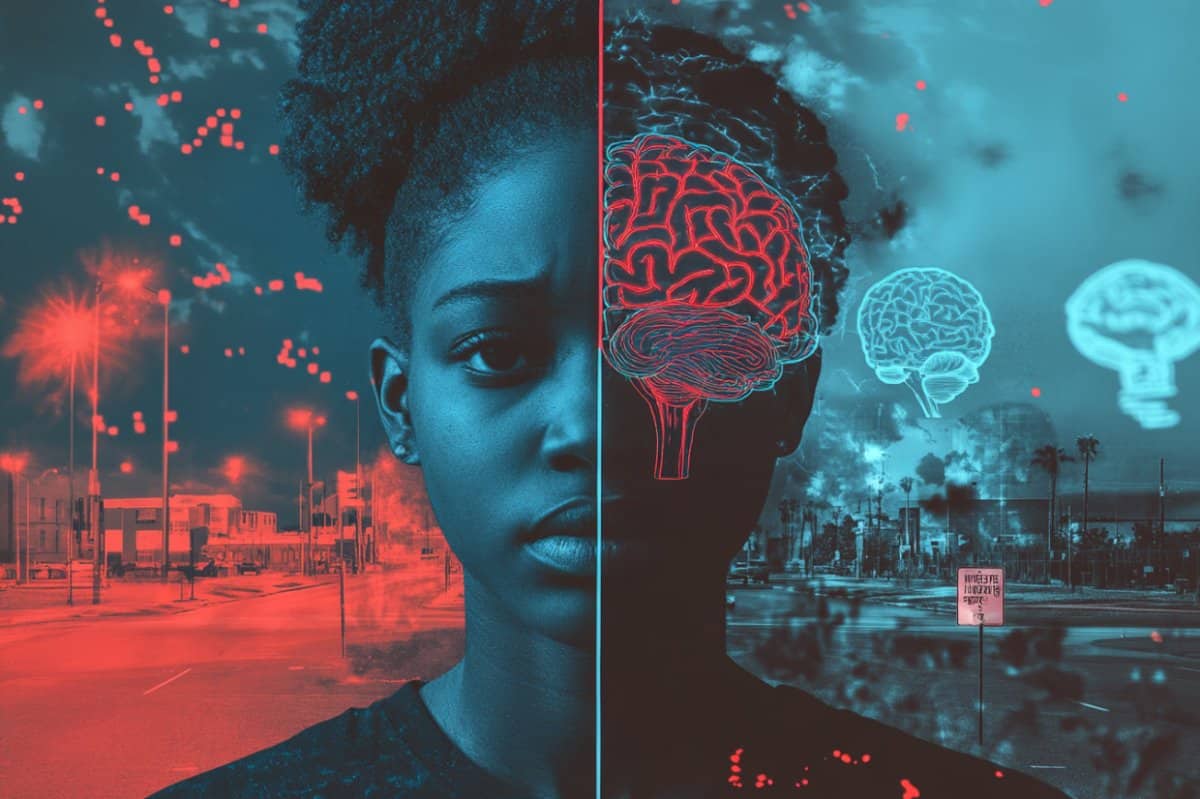Summary: A new study finds that racial inequality and police violence may significantly contribute to higher rates of psychotic episodes in low-income young adults of color. While individual factors like trauma and drug use have long been studied, this research highlights the powerful role of structural oppression.
Respondents who experienced police violence had 52% higher odds of reporting delusions or hallucinations, while youth from racially marginalized groups had a 60% increased risk overall. The findings suggest that addressing systemic racism could be as crucial for mental health as traditional therapy.
Key Facts:
- Structural Stressors Matter: Racial inequality and police violence raise psychosis risk in marginalized youth.
- Higher Risk by Race: Young adults of color had 60% greater odds of reporting psychotic episodes.
- Police Violence Impact: Experiencing police violence was linked to a 52% increase in psychotic symptoms.
Source: NYU
Prevailing theories about why young people experience psychotic breaks at a young age rely on individual factors like exposure to child abuse, school bullying, or drugs.
But a new study from the NYU Silver School of Social Work suggests that broader social factors, such as racial inequality and experience with police violence, might contribute to the proportionately higher rates of psychosis seen among low-income young adults of color.

The study, “Social Defeat and Psychosis in the United States,” was published today by Schizophrenia Bulletin and authored by NYU Silver associate professor Jordan DeVylder and doctoral students Jacqueline Cosse and Brianna Amos.
The researchers culled the National Survey of Poly-Victimization and Mental Health to explore individual-level and societal, or structural, impacts on early psychosis risk. The sample included 1,584 U.S. participants aged 18-29.
Among the respondents, Blacks, Latinos, multiracial, and Indigenous respondents had 60% higher odds of reporting having experienced one or more psychotic episodes in the prior year compared to white respondents, the study determined.
Furthermore, those who cited an experience involving police violence in had 52% higher odds of reporting one or more delusional or hallucinatory episode in the prior year.
The most widely recognized risk factors for psychosis are spelled out in the “Social Defeat Hypothesis,” an influential theoretical framework used by psychiatrists to treat young adults with psychosis.
While the social defeat hypothesis frames risk factors around the impact on the individual, the study shifts the focus to take in account social systems and structural factors.
In the study’s analysis of the U.S. survey, an individual’s sense of “social defeat” can indeed result in psychotic symptoms and can arise from a high frequency of substance use or exposure to bullying, as the theory holds.
But the persistence of racial inequality, and related experiences such as exposure to police violence, could also be relevant factors, according to the study. It calls for research into the impact of societal factors that are more prominent in low-income and marginalized communities.
Developed in Northern Europe, the “Social Defeat Hypothesis” has been used by U.S. psychiatrists for over two decades to understand the development of psychosis, a condition that could show a young adult to be at higher risk of suicidal thinking or even schizophrenia.
Under the hypothesis, social defeats, like feeling humiliated, contribute to long-term neurobiological shifts in the brain and dopamine system especially, and are part of what may bring on instances in which an individual loses touch with reality.
In conducting the study, DeVylder, Cosse, and Amos collaborated extensively with fellow social work scholar Lisa Fedina of the University of Michigan, as well as additional NYU Silver doctoral students.
Commenting on findings’ significance, DeVylder said that structural factors may exert a “substantial” influence on an individual risk for psychosis, and could potentially help explain ethno-racial disparities in psychosis in the U.S.
“This potentially means that reducing exposure to systemic factors, like societal racism, may provide mental health benefits similar to individual-focused interventions, like psychotherapy,” he said.
About this psychosis and neurodevelopment research news
Author: Robert Polner
Source: NYU
Contact: Robert Polner – NYU
Image: The image is credited to Neuroscience News
Original Research: Closed access.
“Social Defeat and Psychosis in the United States” by Jordan DeVylder et al. Schizophrenia Bulletin
Abstract
Social Defeat and Psychosis in the United States
Background and Hypothesis
The social defeat hypothesis posits that exclusion and discrimination experienced by socially marginalized populations predict psychotic experiences (PEs), particularly when perceived as defeatist. However, its emphasis on individual-level factors may obscure the role of structural and systemic influences.
This is significant for the US context, given US histories of pronounced structural racism and economic inequality. This study extends the social defeat hypothesis by examining established indicators of social defeat, along with US-specific factors that capture structural influences on individuals’ perceptions of discrimination and exclusion as defeatist.
Design
Data from the National Survey of Poly-victimization and Mental Health (N = 1 584) were analyzed to investigate cross-sectional associations between individual-level and structural indicators of marginalization and social defeat and self-reported PEs among young adults.
Study Results
BIPOC participants had 60% higher odds of reporting PEs in the past year (OR = 1.60; 95% CI, 1.27–2.03; P = .003). Furthermore, participants with at least 1 experience of police violence in the past year have 52% higher odds of reporting PEs (OR = 1.52; 95% CI, 1.16–2.00; P = .003).
Several additional indicators were associated with increased odds of PE, including race (non-White compared to White), high-frequency substance use, everyday discrimination, exposure to childhood abuse or bullying.
Conclusions
Findings align with European social defeat literature, confirming the relevance of the hypothesis in the US context. However, prominence of structural factors (racism, police violence) suggests that the social defeat hypothesis should incorporate systemic influences, emphasizing the need for interventions addressing societal contributors to psychosis risk.






